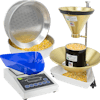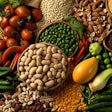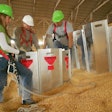
Food pricesrecently broke a record by rising an astonishing 9.4% over the last 12 months.
The last time a 12-month increase came close to that was in April 1981 with an 8.8% jump, according to inflation data published by theU.S. Labor Department’s Bureau of Labor Statistics.
Every food group across the board — meats, poultry, fish, eggs, cereal, bakery products, dairy, beverages, and various fruits and vegetables — cost more today than it did a year ago, but protein takes the lead with a 14.3% price hike.
Compared with fruits and vegetable prices, which rose only 7.8%, it’s becoming less affordable to serve beef, poultry, fish or eggs at every meal these days.
Whileplant-based meat alternativesare still more expensive than traditional meat, the gap is getting smaller. For those who were already curious about trying meat alternatives for perceived health and sustainability benefits, the spike in traditional meat prices may give them another push in the alternative direction.
And they wouldn’t be alone, as the market reached a global value of $29.4 billion in 2020. According to a 2021Bloomberg Intelligencereport, the plant-based foods market could account for up to 7.7% of the global protein market by the year 2030.
As consumers seek to find a balance between sustainable and affordable food options, prepare for an evolution in habits over the next decade.
As people become more familiar with plant-based products and options, our diets will shift to incorporate a variety of protein sources — from legume-based and lab-grown meat to up-and-comers like algae oreven fungi.
While they will never fully replace traditional meat, technology and research may one day help make alternative meat options affordably available, bringing more choices to U.S. consumers.





















